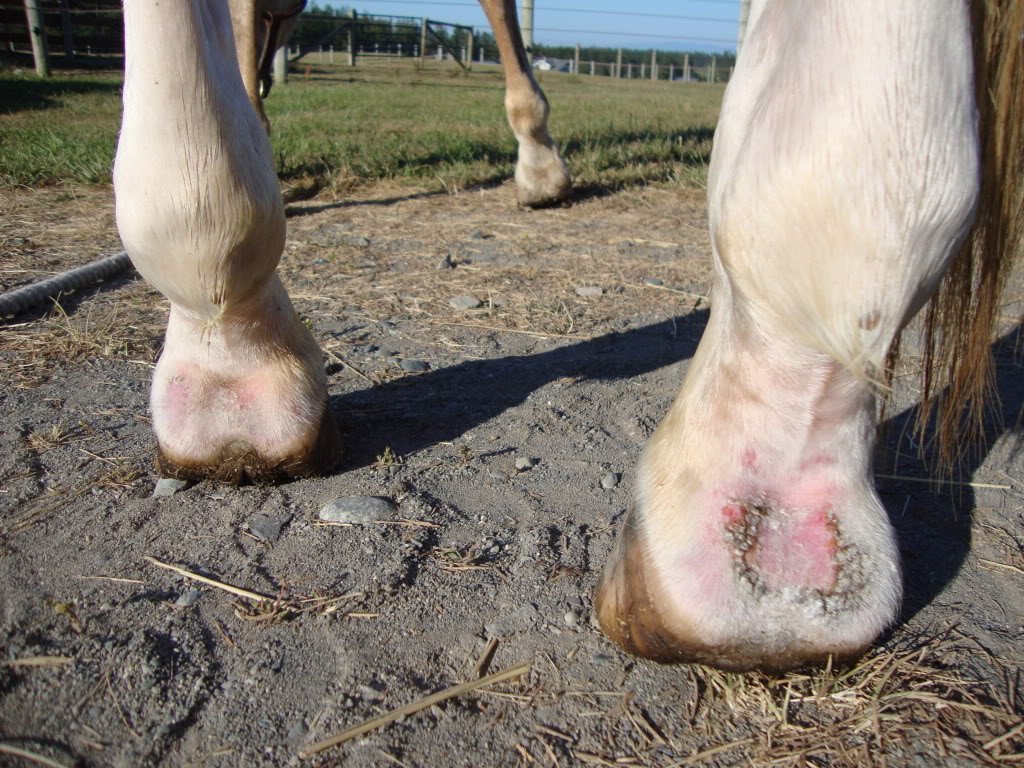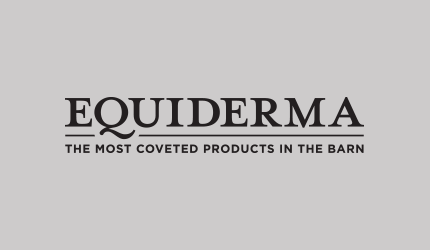- Shop
Collections
Categories
Skin Conditions
- Skin Conditions
- Apparel & Accessories
- Meet the Founder
- Shop
Collections
Categories
Skin Conditions
- Skin Conditions
- Apparel & Accessories
- Meet the Founder

WHEN IS SCRATCHES NOT TYPICAL SCRATCHES?
In my business I talk with many people about the problems they are having with their horse. Often someone will call with the belief their horse has scratches, but it has been totally unresponsive to treatment. This raises a red flag for me. Treatment with Equiderma Neem Shampoo, Skin Lotion and Pastern Paste works wonders on a normal case of scratches. If it is unresponsive and you don’t see a quick turn around you need to consider that perhaps you aren’t really dealing with scratches at all. Do your horses legs look like those in these photos? Are the scabs that form hard to remove? Are they pale yellow in color? Is it only on the white legs ? When you remove the crusts do they return overnight? After the crusts are removed does the skin have a shiny burn like appearance? If so, it’s likely your horse may have Pastern Leukocytoclastic Vasculitis, a relatively common but poorly understood skin disease. The problem generally affects mature horses and produces lesions confined to the lower legs that lack pigment. Initially, redness, oozing and crusting open sores develop, followed by swelling of the affected legs. Long term cases may develop a rough or warty appearance. The cause of pastern leukocytoclastic vasculitis is not yet known, but an immune component is possible. The fact that the lesions are limited to non-pigmented areas of the skin suggests a role for UV radiation. Adverse drug reactions may play a role, and recent studies have implicated a Staphyloccus bacterial infection as a possible cause. A diagnosis is made based on skin biopsy of the affected area, which would show leukocytoclastic vasculitis (inflammation of the blood vessels) with vessel wall degeneration and clots involving the small vessels in the surface skin layer. A reduction in sunlight exposure is very important, either by bandaging the legs or stabling inside during daylight hours. The problem usually starts in the rear of the pastern region and is covered with tightly adhered crusts. Over time, the lesions extend up the leg and can affect the skin as high as the knees or hocks. This is a frustrating condition that requires accurate diagnosis and aggressive, determined treatment. It will take vigilance, patience and daily care.
If a punch biopsy is suggested it is very important that the utmost care be taken. A punch biopsy was performed at the fetlock on the horse in the photos on the bottom. This resulted in the introduction of staph, strep and e coli to the joint/bone and the horse had to be put down three days later. Too often I talk with people who have spent thousands of dollar through veterinary care to no avail. The condition was never addressed properly.
It is important to keep your horses legs clean and free of dirt. Wash the affected area daily with Equiderma Neem Shampoo, dry well and apply Equiderma Skin Lotion, cover with a 1% hydrocortizone cream available at any drugstore, cover entire area with Equiderma Zinc Paste for Pastern Dermatitis. Buy some men’s tube sock – knee high – cut above the heel and pull over your horses legs to cover. Be sure they are not too tight. You should easily be able to slide your finger in. Do not expect lightning fast results. This issue takes time. With diligent care you will see a steady progression to healing.







It’s possible for your horse to live outside in comfort all year...

Winter Rain Rot brings with it a unique and frustrating challenge for...

Ordinarily in this blog I share ideas for understanding your horse better...